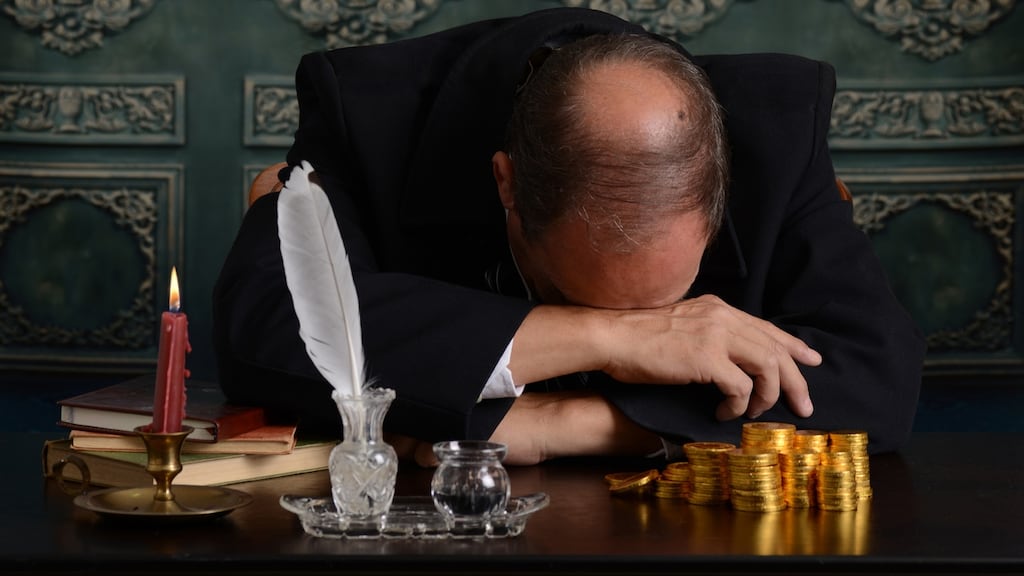In 1897, Murray Finch-Hatton, 12th Earl of Winchilsea and a pioneering motorist, wrote to fellow board members of the Great Horseless Carriage Company: "Gentlemen – I believe you are aware that about three months ago, as the result of overwork, my health suddenly broke down, and Sir William Broadbent ordered me at once to go to the Riviera."
But the rest cure had failed and Broadbent, an eminent physician, had judged the earl was “not in a fit state of health to undertake any responsible work”. As a result, he would be obliged to step down as a director.
Finch-Hatton’s decline (he died the following year, at 47) is a footnote in corporate history, but his admission was not unusual for its time. The Financial Times, which published his letter, was dotted with announcements of forced breaks by overworked corporate directors in the 1890s.
That contrasts with the way in which companies today are only beginning to tackle the physical and mental health risks of long hours, and with boards' continued coyness about admitting when senior staff succumb to burnout. Finch-Hatton's resignation came towards the end of a period of rising concern about the pace of technological disruption, to which, in a small way, the motor vehicles promoted by the Great Horseless Carriage Company were contributing.
‘High tension’
By the 1900s, newspapers advertised products such as Rexall’s Americanitis Elixir to “over-wrought business men”, worried that “business conditions today ask more of a man’s vitality than ever before”. A 1907 advert continued: “It’s one continuous drive at high tension, overtaxing the body and brain until a complete breakdown comes.”
This worry about the velocity of modern life sounds familiar. A search of the Factiva media database reveals the number of references to the “accelerating pace of change” has doubled since 2014, compared with the preceding five years. We live again in “anxious times” – the title of a new book that features the Rexall’s advert and examines late 19th-century society’s responses to overwork and stress.
Instead of Victorian magnates' rest cures, 21st-century executives pay for mindfulness and meditation sessions, personal trainers and rehab programmes
The internet and social media – today’s equivalent of the telegraph and popular press – contribute to the sense of overload, but also, like the adverts of the 1900s, provide a vector for its treatment. The stressed-out are encouraged to use technology to monitor their physical and mental wellbeing, the quality of their sleep, and their nutrition. Instead of Victorian magnates’ rest cures, 21st-century executives pay for mindfulness and meditation sessions, personal trainers and, in extremis, rehab programmes.
The University of Oxford's Sally Shuttleworth is a co-author of Anxious Times and leader of a research project, "Diseases of Modern Life". She told me that "it became very acceptable [in the late 19th century] for business leaders to have mental breakdowns". Attributing their ill-health to overwork was both a badge of pride and an endorsement of their decision to enjoy a period of what one promoter of the Riviera called "legitimate idleness".
Convalescing
From at least the 1860s, British travellers began bigging up the health benefits of resorts such as Mentone, on the Mediterranean, and later Davos in the Swiss Alps. There, convalescing dignitaries sowed the seeds of the high-altitude, high-level networking that occurs at the World Economic Forum conference.
By the 1890s, as British economic prosperity peaked, the trend for captains of industry to take lengthy resort cures was dying out. “It started to be seen as self-indulgent,” Prof Shuttleworth told me.
The arrival of the telegraph was even more revolutionary than the internet, reducing the transmission of information from weeks to hours
These echoes of history can help executives today. Our forebears thought they were living in times of unprecedented pressure and stress. Yet they were able to overcome their concern and even advance thinking about how to diagnose and treat the age’s emerging social problems. As the authors of Anxious Times say in their conclusion, “without history, we live in a perpetual present – a domain that, by definition, tends toward the persistently bewildering”.
The historical perspective should encourage us to treat with scepticism the most overwrought responses to today’s technological changes. The arrival of the telegraph was even more revolutionary than the internet, reducing the transmission of information from weeks to hours.
Much faster
By contrast, as the Economist detailed in 2015 in an article headlined “The creed of speed”, it is often hard to prove that the pace of business today is much faster than it was in the late 20th century.
A long view of our own anxious times ought also to make us more careful about leaping to adopt the latest faddish and costly cures for workplace stress – the equivalent of those turn-of-the-century “elixirs”.
Yet companies could still learn from Finch-Hatton and others’ candour. By encouraging companies to shed light on the dangers of overwork, convincing business leaders to confess when they are unable to cope, and tackling the problem before it takes a toll, we can at least show we have learnt something from the past 150 years.
– Copyright The Financial Times Limited 2019










